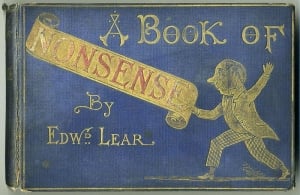
The limerick, as history would have it, started out as a short little poem. Just five lines of rhyming text make up the limerick. Lines 1, 2, and 5 rhyme, as do lines 3 and 4. Syllables and wording emphasis was meted to create a sing-song effect when correctly pronounced. Most likely you’ve heard several versions of popular children’s limericks. Even Shakespeare wrote a few. However, what you may not know is the history of limericks.
As in all things Irish, the history of limericks is debatable and uncertain. It is known, however, that limericks started out in England. As short, rhyming poems, they were often used and repeated by the working class and drunkards. The popular line of a song, often sung by the same class, “Won’t you come up to Limerick?”-soon transitioned these little poems into limericks with this reference to the County or City of Limerick in Ireland.
The second piece, of course, in that the limerick is often accused of being dirty or bawdy. In truth, many limericks innocently began as children’s nursery rhymes. Once they were adopted by those under the influence of alcohol, so changed the connotation of the limerick forever. On the other hand, it makes sense that the five line rhymes would be easily and quickly remembered by a population of uneducated workers who couldn’t read, doesn’t it? Even more so, bawdy, colorful limericks would make you laugh after a long day.
In 1845, Edward Lear published a book called ‘The Book of Nonsense’ in which he featured 72 limericks. This is the first history of limericks, which includes a published work. In his book, you would note each limerick is often accompanied by a mischievous photo. The photo was expected to match the topic of the limerick. A later version, in 1872, updated the earlier work. In total, Lear wrote 212 limericks, mostly nonsense.
In a culture such as Ireland where so much emphasis is placed on storytelling and socialization, limericks fit the bill of an easily memorable little story you could tell at the pub or the public market. The history of limericks isn’t a long one, since exact details can’t be pinned down. We can all agree, however, that the limerick is an important, interesting part of Irish culture , similar to all the symbols of Ireland that come before it.

How We Travel
Learn MoreMore Articles
Why Halloween in Ireland is a Must-Visit: Explore the Origins of Samhain and Spooky Traditions
Ireland, often recognized for its vibrant landscapes, ancient castles, beer history, and longstanding heritage, offers a unique experience unlike any other during Halloween. Rooted in the ancient Celtic festival of Samhain, Ireland’s Halloween celebrations are deeply traditional, atmospheric, even immersive. Here’s why you should consider visiting Ireland for Halloween.
Your Guide to Visiting Bridgerton Filming Locations
Dearest gentle reader, Bridgerton’s fairytale world is closer than you think! Explore the real-life filming locations from the hit show on your next trip to the United Kingdom. From London’s grand Regency estates to Bath’s stunning assembly rooms, we’ll give you the inside scoop of what to see—better yet, we’ll do all the planning, so you don’t have to.

By-Your-Side Service℠
Our personal concierge service and mobile app

Custom Europe Experts
Experts in planning truly customized trips

Value without Compromise
High-touch inclusions and customized experiences

Consistency with Individuality
You’ll always be met with the highest standards










